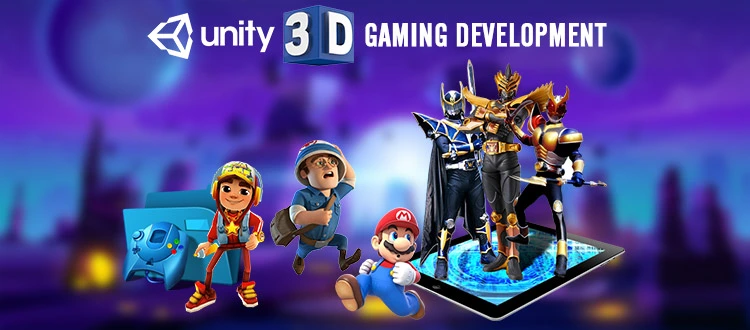How Much Will It Cost to Develop an Indie Game Development in 2025?
The indie game development scene is as strong as ever, and heading into 2025, it can’t seem to get much stronger. The scene has no intention of letting up and sees more aspiring developers and small studios making innovative, artistic, and memorable games that can compare with the best productions. One thing, however, takes center stage: The cost of developing an indie game in 2025. The cost of game development is understood in terms of several factors, from the scale and complexity of the game to the tools and resources used. This article will break down these elements to give an in-depth look at what indie developers can expect to spend. 1. Core Factors Influencing Indie Game Development Costs Several key factors determine the overall cost of developing an indie game. Here are the most significant ones: Scale and Ambition The larger your game is, the more it will cost. A 2D platformer with minimalist graphics will be much cheaper than a 3D open-world RPG. The assets required for larger games take longer to develop and require bigger teams, and these costs multiply. Team Size and Specialization The largest expense often falls on hiring skilled professionals in the field of programmers, artists, writers, and sound designers. More often than not, if there is a need for the right project, it requires either full-time staff or freelancers, or both. In recent times, the salaries of 3d game development professionals have risen with the hike in demand and high skill sets. Game Engines and Software Tools The most widely used game engines currently for the creation of indie games are Unity and Unreal Engine. They are free, but to get some advanced features, one has to purchase a premium license or add-ons. Also, software products for creating art, animation, and sound effects are added to the bill. Marketing and Distribution Half of the journey is to make the game, but half is to get the game marketed through trailers and other promotional material. Costs vary but do not forget about them. Testing and QA QA ensures that the game has been bug-detected before its launch. QA testing is dependent upon the complexity of the game. If it becomes too complex, then the time for testing could be more along with the usage of more resources or outsourced. 2. Indie Games Budget in 2025 Costs for an indie game go as follows during each phase in the development stages. These would be the costs of industry-average standards and usually vary according to location, personal experience, or project specifics: Pre-production Cost This mainly involves planning concept creation and prototyping. Game Design Document (GDD): $1,000 – $5,000 Concept Art, Prototypes $2,000 – $10,000. Programming. $20,000 – $100,000 depending on game complexity Art and Animation. $10,000 – $50,000 Sound Design and Music. $5,000 – $20,000 Game Engine Licenses and Tools. $0 – $5,000 3. Marketing and Promotion Trailers and Promotional Materials. $2,000 – $10,000 Social Media Campaigns. $1,000 – $5,000 Community Management. $500 – $2,000 per month 4. Testing and QA Internal QA. $2,000 – $10,000 External Playtesting. $1,000 – $5,000 5. Post-Launch Support Updates and Patches. $1,000 – $10,000 depending on post-launch issues Estimated Total Cost: $40,000 – $200,000 6. Cost-Saving Measures Without Compromising Quality For indie developers, cost-cutting is the way to go. Here are some tips: Free or Low-Cost Tools Most free or low-cost tools are for indie developers. For instance, open-source software like GIMP and Blender can substitute for expensive design tools. Use Free Tiers of Game Engines The free plans of Unity and Unreal have great features. Only need to go premium if it is really necessary. Smart Outsourcing The hiring of a freelancer especially for sound effects design or animation seems to be cheaper than hiring a full-time staff for it. Focus on an MVP Instead of trying to develop a huge game at first, develop a small one that can be scaled up later. It must also be fully polished. Build a Community Early Reach potential players through social media, Discord, and forums. This can be a form of organic marketing and feedback without breaking the bank. 7. Crowdfunding and Alternative Funding Sources More often than not, indie developers are able to raise funds by posting their projects up on platforms like Kickstarter. In 2025, platforms have been furthered into development, and now provide a connective tool between developers and passionate backers. Grants and investments from indie game funds or publishers can also be a source of capital to bring your vision to life. Researching and applying for these opportunities is often worth the effort. 8. The Value of Planning and Budgeting The key to managing costs is proper planning and realistic budgeting. Break your project into milestones and allocate the resources accordingly. Remember, some unexpected expenses are bound to pop up, so always keep a contingency fund. 6. Success Stories and Lessons from the Indie Game Industry Thousands of independent games have succeeded on low budgets, so there is proof that creative planning can overcome financial barriers. Examples include Stardew Valley, developed by one person over several years, and Celeste, developed by a small team. Success stories can inspire indie game developers. What do we learn from success stories? Focus on gameplay and player experience. Develop a narrative or mechanic that stands out, so your game will be memorable. Engage with your audience early to build buzz and loyalty. Conclusion The indie game development cost in 2025 varies based on scope, team size, and resources. Even in the range of $40,000 to $200,000, planning and budgeting are very essential. Using modern tools makes it manageable. Remember, independent game development doesn’t only deal with expenses but with the passion, creativity, and effort that you exert in your own project. And by using the correct approach, it may be an indie game with a big opportunity. Contact us for more details!









